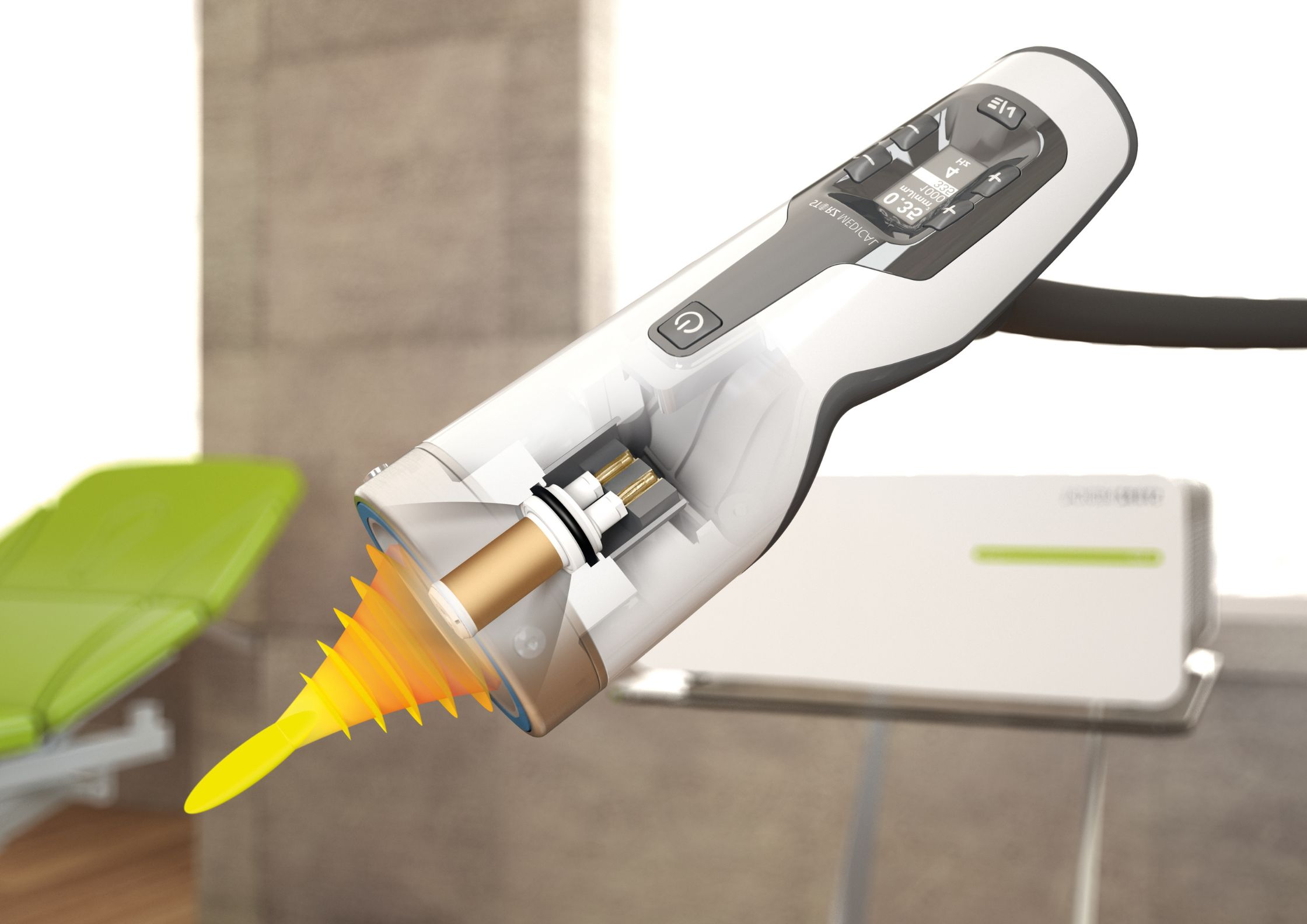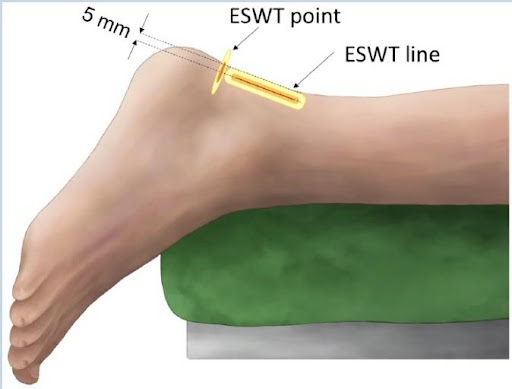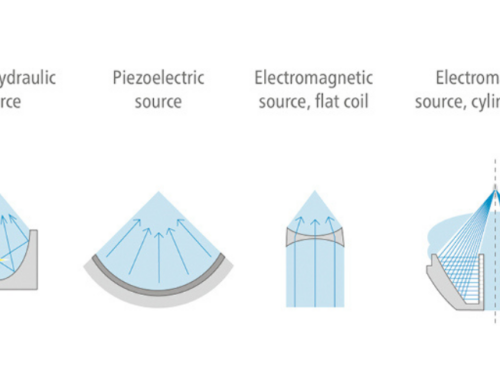Shockwaves are high-frequency acoustic pulses with unique physical properties- high positive pressure, a rise time of less than 10 nanoseconds, and a tensile wave.
There are two basic types of shockwave therapy – focused shockwave therapy (fSWT) and radial shockwave therapy (r SWT), also called as radial pressure waves.
There are three different types of shockwave generators commonly used in generation of focused shockwave therapy (fSWT).
An electro-hydraulic generator, which uses the tips of an electrode as a point source.
An electromagnetic generator, which uses an electromagnetic coil and a metal membrane placed opposite to release shockwaves.
- A piezoelectric generator which uses the piezoelectric effect—many piezoelectric crystals are mounted in the spherical surface generator.
This blog aims to reviews key difference between electromagnetic and piezoelectric handpieces and also explores some relevant trials on effectiveness in the clinical population.

How do electromagnetic handpieces differ from piezoelectric handpieces?
1. Deeper penetration of shockwaves
Electromagnetic shockwaves can reach depths of up to 6.5cm with a stand-off and 10-12cm without a stand-off, making them effective for treating both deep and superficial conditions such as proximal hamstrings tendinopathy or lumbar facet joint pain.
In contrast, piezoelectric shockwave penetration depth is limited to between 0.5cm and 5cm, even with the use of stand-offs.
2. Five times larger area treated
Each handpiece has different sized focal treatment zones, this plays a key role in treatment effectiveness. Piezoelectric generated waves have the smallest focal zone, which can make it difficult to accurately target the correct area. The electromagnetic handpiece, on the other hand, has a larger treatment zone, allowing for greater accuracy.
A simple pivoting movement of the electromagnetic handpiece allows treatment of an area more than five times larger than the area covered by the piezoelectric handpiece. Choosing the inappropriate stand-off for a piezoelectric handpiece can also result in inefficient treatment because the target area of the pain is missed.
The linear movement of the electromagnetic handpiece also results in a deeper and more complete treatment of painful zones with the electromagnetic shockwave whereas the piezoelectric handpiece covers a narrower treatment volume with its linear movement.
For the highest effectiveness of the shockwave’s force, the maximum energy pulses should be focused on the point where the treatment is supposed to be administered.
3. Consistency of energy output
The electromagnetic handpiece maintains a consistently high level of energy output throughout its entire service life, while the piezoelectric handpiece experiences electric fatigue, leading to a decrease in performance and the need for more pulses per treatment session.
4. Functionality and Usability
The electromagnetic handpiece is lighter and easier to use, with a trigger on the handpiece, unlike the piezoelectric, which is large and requires a foot pedal. This makes the operator experience much more comfortable with the electromagnetic handpiece. The weight of the STORZ hand-piece is around 650g, whereas the Peizowave handpiece is almost double that, at 1200g.

Clinical trials comparing Storz (electromagnetic) and Piezowave (piezoelectric) shockwave devices
Focused Shockwave in Achilles Tendinopathy
A line-focused ESWT applicator with an equally distributed energy density (ED) level on a line with 50 mm length (Richard Wolf GmbH, FBL 10×5 G2) has been purported to be superior due to the larger treatment volumes.
However, in the clinical population, a single-blinded placebo-controlled randomized controlled trial by Gatz et al (2021) had shown that there was no statistically relevant effect of ESWT delivered by Piezowave compared to placebo in the management of Achilles Tendinopathy.

Figure 1. Point Vs Line-focused ESWT
Although the tendon volume is larger in line-focused ESWT such as Piezowave 2, the maximum energy density is higher in point- focused ESWT technologies such as STORZ Duolith.
Whereas, trials using STORZ devices has been shown to safe, viable and effective option for the treatment of Achilles Tendinopathy (Saxena et al, 2011; Saxena et al, 2019).
Focused Shockwave in Erectile Dysfunction (ED)
Focused shockwave is a well-established treatment modality in the management of erectile dysfunction, with proven efficacy and safety. Multiple trials using STORZ Duolith have shown the device is effective in the management of vasculogenic erectile dysfunction (Chung et al, 2021; Olsen et al, 2015). Focused shockwave using STORZ technology has been shown to be safe and improves erectile dysfunction, in men with mild to moderate erectile dysfunction.
However, it has been shown that there was no clinically relevant effect on ED by the application of Piezowave 2 as shown in this double-blind, sham-controlled randomised trial by Fojecki et al (2017). This study using Piezowave 2 had shown no improvement in erectile dysfunction in the overall population.
In summary, STORZ focused shockwave technology has been shown to be clinical effective in multiple trials in various domains including orthopaedics, sports medicine, neurology and urology with no major adverse effects.
The device is compact and lighter with efficient penetration while maintaining adequate energy, which is necessary in the management of common musculoskeletal pathologies.
References
Chung et al (2021). A Prospective, Randomized, Double-Blinded, Clinical Trial Using a Second-Generation Duolith SD1 Low-Intensity Shockwave Machine in Males with Vascular Erectile Dysfunction. The World Journal of Men’s Health, 40.
Fojecki et al (2017). Effect of low-energy linear shockwave therapy on erectile dysfunction—a double-blinded, sham-controlled, randomized clinical trial. The journal of sexual medicine, 14(1), pp.106-112.
Gatz et al (2021). Line-and point-focused extracorporeal shock wave therapy for Achilles tendinopathy: a placebo-controlled RCT study. Sports health, 13(5), pp.511-518.
Olsen et al (2015). Can low-intensity extracorporeal shockwave therapy improve erectile dysfunction? A prospective, randomized, double-blind, placebo-controlled study. Scandinavian journal of urology, 49(4), pp.329-333.
Saxena et al (2011). Extra-corporeal pulsed-activated therapy (“EPAT” sound wave) for Achilles tendinopathy: a prospective study. The Journal of foot and ankle surgery, 50(3), pp.315-319.
Saxena, A. and Shou, L., 2019. Combined ESWT & RSW Therapy for Achilles Tendinopathy: A Prospective Study. Muscles, Ligaments & Tendons Journal (MLTJ), 9(4).
